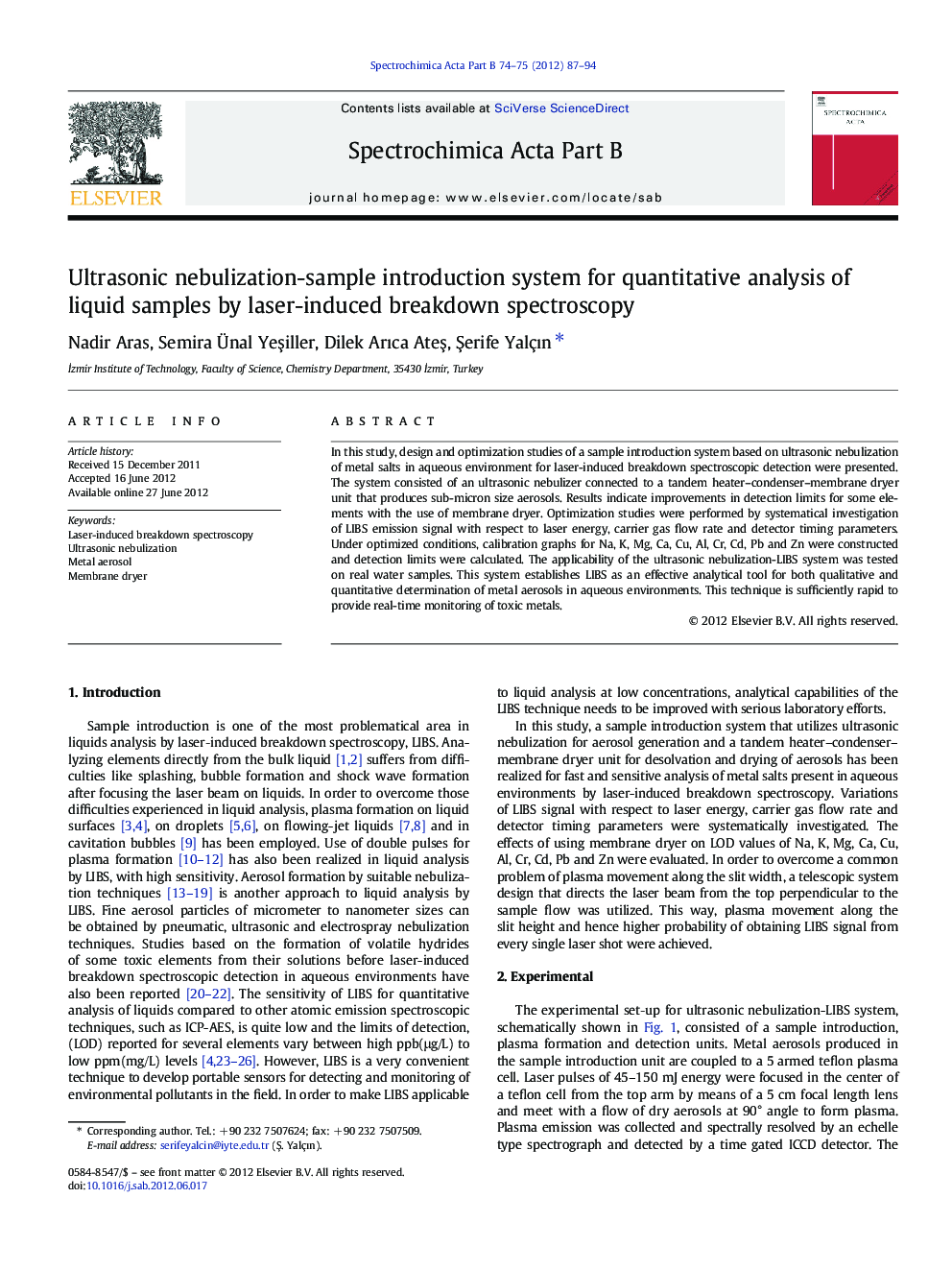| Article ID | Journal | Published Year | Pages | File Type |
|---|---|---|---|---|
| 1240341 | Spectrochimica Acta Part B: Atomic Spectroscopy | 2012 | 8 Pages |
In this study, design and optimization studies of a sample introduction system based on ultrasonic nebulization of metal salts in aqueous environment for laser-induced breakdown spectroscopic detection were presented. The system consisted of an ultrasonic nebulizer connected to a tandem heater–condenser–membrane dryer unit that produces sub-micron size aerosols. Results indicate improvements in detection limits for some elements with the use of membrane dryer. Optimization studies were performed by systematical investigation of LIBS emission signal with respect to laser energy, carrier gas flow rate and detector timing parameters. Under optimized conditions, calibration graphs for Na, K, Mg, Ca, Cu, Al, Cr, Cd, Pb and Zn were constructed and detection limits were calculated. The applicability of the ultrasonic nebulization-LIBS system was tested on real water samples. This system establishes LIBS as an effective analytical tool for both qualitative and quantitative determination of metal aerosols in aqueous environments. This technique is sufficiently rapid to provide real-time monitoring of toxic metals.
► An USN Sample Introduction System for LIBS detection of liquids has been realized. ► Use of membrane dryer has provided some enhancements in signal intensities. ► Enhancements of up to 3 times in LOD values of some toxic metals were obtained. ► Technique is sufficiently rapid for monitoring toxic metals in water samples.
